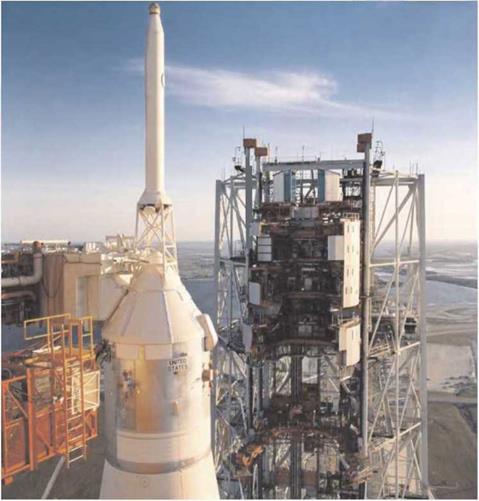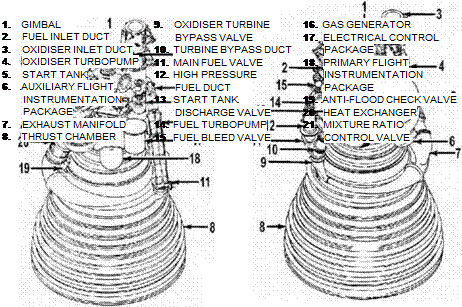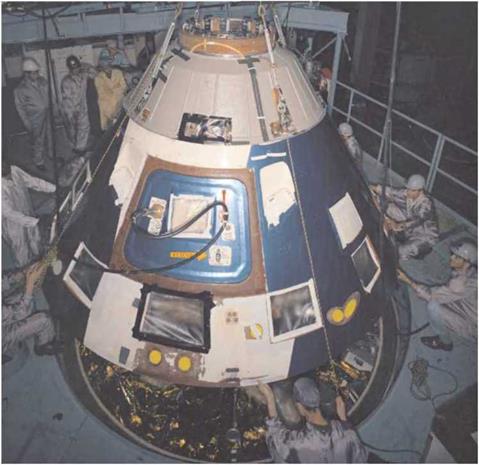Apollo used two radio-frequency ranges for communications: VIIF and S-band. Originally. NASA had intended to implement the radio systems that they already had available to fulfil the disparate requirements of voice, data, television, as well as the need to track the spacecraft out to the Moon. But it soon became clear that this would involve the installation of multiple items of hardware, with severe weight penalties, and so, as far as possible, the engineers strove to integrate these requirements into a single system. The result was the Unified S-band or USB system.
USB used frequencies above 2 GIIz which were well suited to long-distance operation, but their highly directional nature made the USB system less suitable during the final stages of re-entry, or when the crew were talking between vehicles at the Moon. For this, line-of-sight VHF frequencies were used.
The antennae to support these radio systems were arranged all around both spacecraft. For the most part, the CSM hid its antennae within the smooth lines of its hull in order to preserve its streamlined shape for the ascent through the atmosphere or the later re-entry. In comparison, the LM appeared to bristle with various dishes, helixes and rods as function overcame form on a ship that needed no streamlining.
The most prominent component on the CSM was an array of four dishes known as the high-gain antenna (HGA). To preserve the spacecraft’s aerodynamics, it was
|
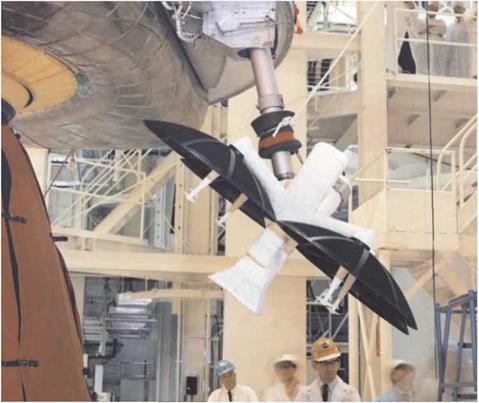
The high-gain antenna assembly at the aft of the Apollo 8 service module. (NASA)
|
mounted at the service module’s base and folded next to the engine bell until the SLA panels were jettisoned. It was then brought out to the side on the end of an arm. Its mounting was articulated, and could swivel under automatic or manual control to aim at Earth. Like an adjustable torch, the array itself could be electronically configured in three ways: wide beam, medium beam and narrow beam. Each focused the antenna’s pattern into tighter beams to concentrate its ability to send and receive the USB radio signal over the large distances to which the spacecraft travelled.
The HGA had four receiver horns at its centre. To keep lock on Earth in narrow – beam mode, the receiver electronics compared the signal strength coming from each horn and sent steering signals to the antenna’s motors as appropriate to equalise the strength across all four. While Apollo 12 orbited the Moon, this system failed and as they departed for the Moon in Intrepid, Conrad and Bean were able to watch what the antenna was doing.
“Houston. This is Intrepidcalled Conrad. “If it would be any help to you, Yankee Clipper’s S-band antenna is just wandering – it’s just oscillating back and forth in two directions, like it can’t hold lock.”
“It looks like it’s in some sort of continual search mode,” added Bean.
Mission control suspected that the fault was affected by heat and to localise the cause, they arranged a test during the coast back to Earth. The CSM was held in an attitude that pointed the SPS engine at the Sun, thereby applying solar warmth to the HGA for an extended period of time. Various modes of operation were used and the problem was narrowed down to a set of microwave electronics in the antenna.
This method of aiming an antenna is now considered obsolete in that to point at its target the beam must be slightly off-axis – i. e. be imperfectly aimed. The preferred method is to use a spacecraft’s computer and its guidance system to know where to aim the antenna. Since the computer always knows the spacecraft’s attitude and it can work out where its target, e. g. Earth, is, then it can directly drive the antenna to a very precise angle that maximises the antenna’s performance.
As the HGA was mounted to one side of the spacecraft, it could only be used when that side was facing towards Earth. For other occasions, four omnidirectional antennae were flush-mounted around the periphery of the command module. As the spacecraft rotated, these could be switched into use as necessary to ensure constant communications with the ground. Being omnidirectional, their pattern of reception and transmission was unfocused; their usefulness was limited because they could not carry large amounts of data. As a result, the use of the communications system for high-bandwidth data had to be carefully choreographed with the attitudes adopted
|
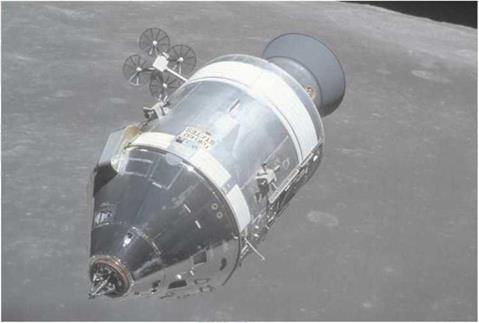
Endeavour, Apollo 15’s CSM in lunar orbit. The four dishes of its high-gain antenna are visible top left and a scimitar VHF antenna is near the US flag. (NASA)
|
by the spacecraft for its various tasks. If the flight controllers wanted a detailed look at the spacecraft’s systems, then the telemetry had to carry much more digital data. From near-lunar distances, this could only be handled by the I IGA. Similarly, the high-bandwidth demands of television required this dish array when in the vicinity of the Moon. There were occasions, however, when tests were performed using only the omnidirectional antennae to send TV or high-bandwidth data to the large dishes of the Manned Space Flight Network. For VHF communication, the CSM sported a pair of scimitar antennae housed in semicircular mouldings on each side of the service module. These were primarily for communication with the LM.
The LM had a single dish antenna for high-bandwidth communications to Earth and a pair of omnidirectional antennae mounted fore and aft. It also sprouted three VIIF antennae: two mounted fore and aft for communication with the CSM and one that would be raised from the roof in order to link the two crewmen walking outside on the lunar surface, both with each other and with mission control. It had two other antennae, but these were for radar rather than communications.













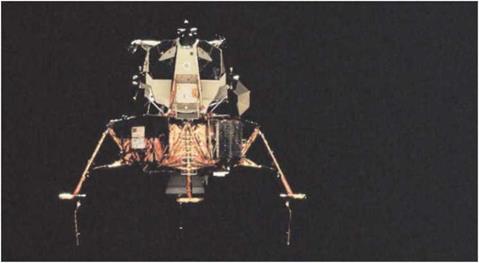
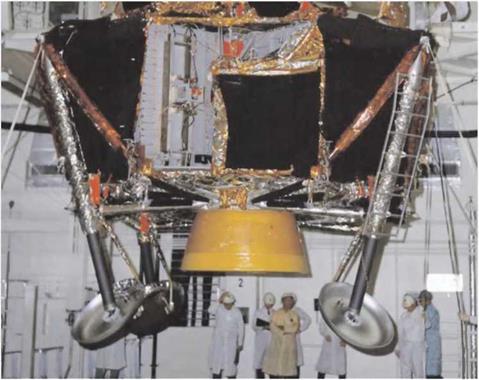
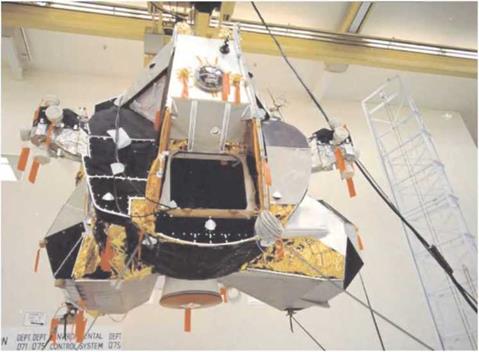
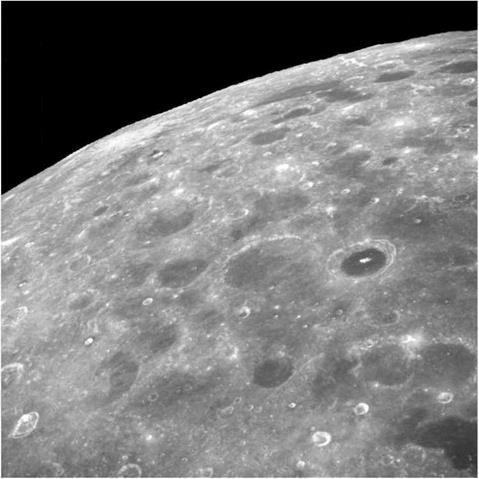
 On the morning of 21 December 1968 Frank Borman, Bill Anders and Jim Lovell rode a Saturn V away from Earth to become the first people to swap the Earth’s gravitational hold for that of another world. The three-day long coast out to the Moon gave Jim Lovell plenty of time to practise monitoring the ship’s trajectory by taking sightings of Earth, the Moon and the stars. On 24 December 1968, Apollo 8 took its crew around the lunar far side where they fired its SPS engine to enter lunar orbit to begin 10 revolutions, each lasting two hours. As they coasted 110 kilometres above the cratered surface, the crew closely examined two sites that were being considered for the first landing and, along with tracking stations on Earth, practised techniques for navigating while orbiting the Moon. Much of Earth’s population with access to television watched with amazement when the crew made an extraordinary Christmas-time black-and-white television broadcast made on the penultimate orbit, during which they read the first few verses from the Bible’s Book of Genesis while the stark early morning landscape of the Moon passed in front of the camera.
On the morning of 21 December 1968 Frank Borman, Bill Anders and Jim Lovell rode a Saturn V away from Earth to become the first people to swap the Earth’s gravitational hold for that of another world. The three-day long coast out to the Moon gave Jim Lovell plenty of time to practise monitoring the ship’s trajectory by taking sightings of Earth, the Moon and the stars. On 24 December 1968, Apollo 8 took its crew around the lunar far side where they fired its SPS engine to enter lunar orbit to begin 10 revolutions, each lasting two hours. As they coasted 110 kilometres above the cratered surface, the crew closely examined two sites that were being considered for the first landing and, along with tracking stations on Earth, practised techniques for navigating while orbiting the Moon. Much of Earth’s population with access to television watched with amazement when the crew made an extraordinary Christmas-time black-and-white television broadcast made on the penultimate orbit, during which they read the first few verses from the Bible’s Book of Genesis while the stark early morning landscape of the Moon passed in front of the camera.
